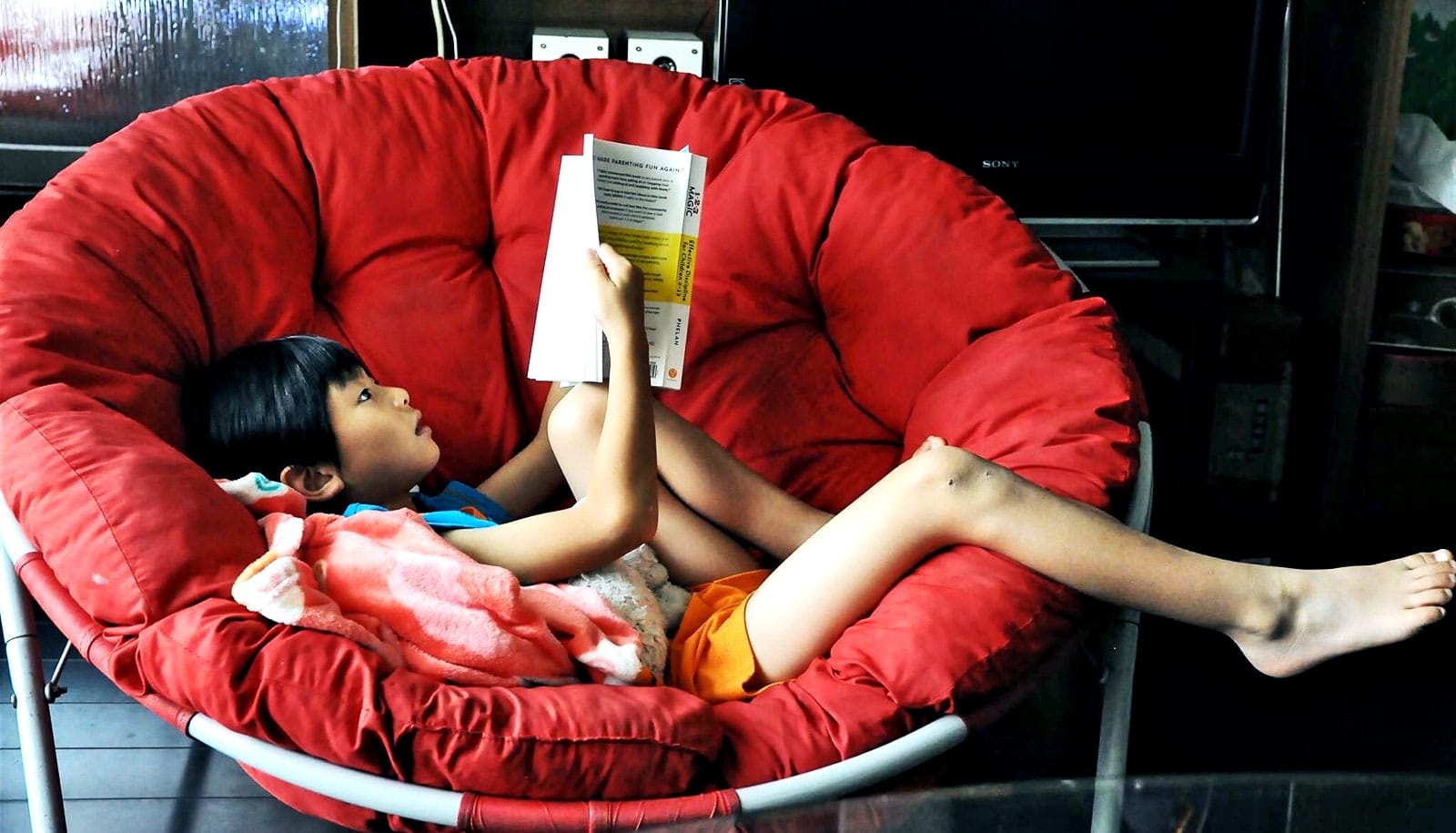The reading difficulty associated with dyslexia stems from a lack of coordinated processing in the four brain areas known as “the reading network,” according to new research.
The new study could help researchers develop tests for early identification of dyslexia, which affects 80 percent of people who struggle with reading, writing, and spelling.
Tasks which require audiovisual processing are especially challenging for children with dyslexia, says Chris McNorgan, an assistant professor in the psychology department at the University at Buffalo.
Designing tests that address the problem of audiovisual integration could detect dyslexia, which often goes unnoticed in elementary education’s early years. Educators often think children with the condition are simply at the lower end of a normal range of reading levels.
“Until these kids with dyslexia are lagging so far behind their peers, there’s no way to reasonably assume that they’re not part of a continuum of ability, but rather a separate group altogether,” McNorgan says.
Reading network
“We find that the organization of the brain outside of the core reading network does not appear to be related to how well or poorly dyslexic children read,” McNorgan says. “This is notable because it would be consistent with dyslexia as a problem related to the wiring specifically of the brain areas associated with integrating auditory and visual information, and not with some other general cognitive disruption, such as memory or attention.”
Previous dyslexia research focused on the reading network connection strength. McNorgan and colleagues looked at strength and how the regions connect, too.
“To think of the ‘manner’ of connections, by way of analogy, as being separate from ‘strength,’ a city planner trying to optimize traffic flow is probably not going to be successful by just dropping a multi-lane highway down the middle of a city if the neighborhoods and other city streets are not organized in a way that can take advantage of the extra traffic capacity.
“While connection strength is absolutely an important factor, our results indicate that it is only one of several components of the brain network that is optimized for fluent reading through practice.”
‘It’s a struggle’
In cases of dyslexia, there is no problem with how someone’s eyes or ears work. But reading isn’t about just what’s seen and heard; it’s a multisensory task that involves decoding letters into their associated speech sounds.
“Don’t imagine someone as seeing words with scrambled letters or seeing letters upside down,” says McNorgan. “Dyslexia is about being unable to figure out how a particular sequence of letters fits together and then mapping that sequence to a particular sound.”
Consider coming across a new word, like reading “Brobdingnagian” for the first time in Jonathan Swift’s Gulliver’s Travels. The unfamiliarity requires a laborious effort to unpack the letters’ sounds into what becomes the word.
“It’s a struggle. And though even fluent readers occasionally encounter this difficulty, the exertion required to get the word is what happens all the time for people with dyslexia,” McNorgan says.
Optimal wiring
For the current study, which appears in PLOS ONE, researchers used fMRI, a technology that measures and maps brain activity, to look at how the regions of the reading network connect and interact.
The 24 participants, ages 8-13, completed rhyming tasks under three conditions: seeing two words; hearing two words; and hearing the first words while seeing the second. The rhyming tasks required participants to map visual representations to sounds.
As the participants completed the tasks, fMRI scans showed the activated brain regions and how they communicated.
“We’re taking a brain network perspective,” says McNorgan. “We want to learn, not just what these brain areas are doing, but how are these areas talking to each other.”
The goal is to determine whether or not the network’s configuration is determining the degree to which dyslexic children experience reading difficulty.
“The way things are wired is going to make a big difference in how communication occurs within this network,” he says. “And why some children’s brains seem to be resistant to becoming optimally wired remains an outstanding question.”
Source: University at Buffalo


